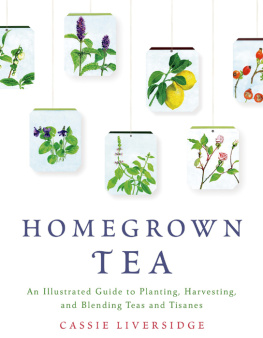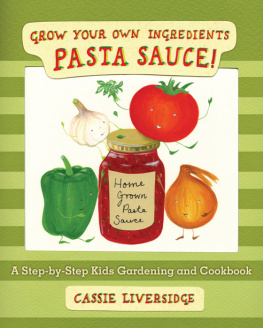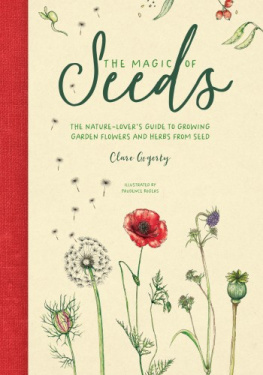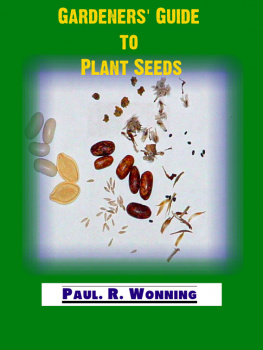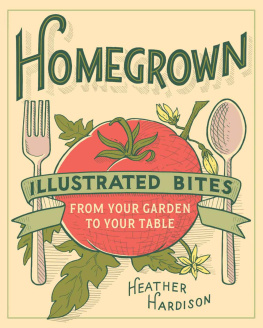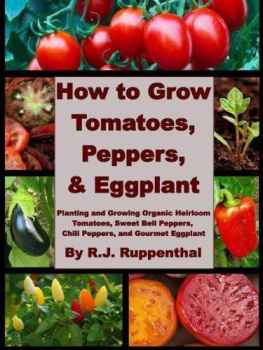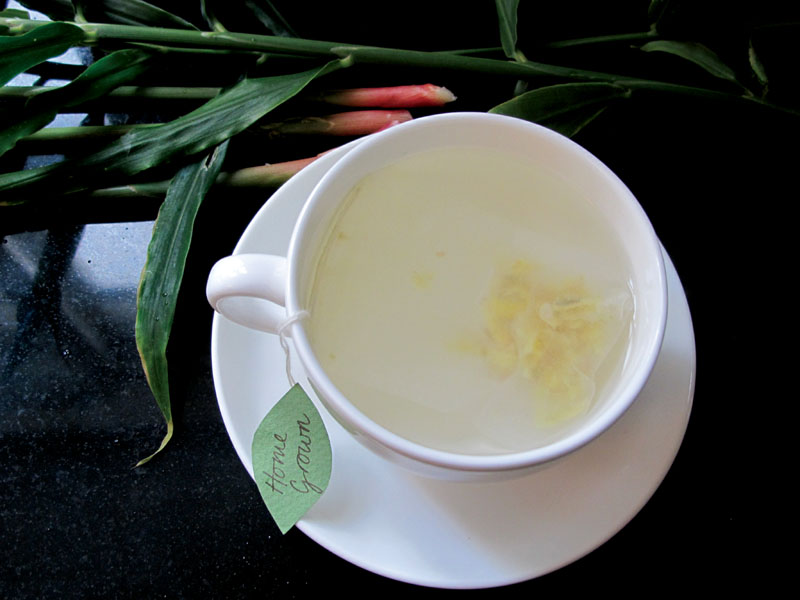The author and publisher have provided this e-book to you for your personal use only. You may not make this e-book publicly available in any way. Copyright infringement is against the law. If you believe the copy of this e-book you are reading infringes on the authors copyright, please notify the publisher at: us.macmillanusa.com/piracy.
The author has researched each plant used in this book but is not responsible for any adverse effects any of the plants may have on an individual. One plant may be good for one person but have a negative effect on another. All the plants are consumed entirely at your own risk. Never use a plant as an alternative to seeking professional medical advice and always consume tea in moderation.
HOMEGROWN TEA. Copyright 2014 by Cassie Liversidge. All rights reserved. For information, address St. Martins Press,
175 Fifth Avenue, New York, N.Y. 10010.
The Library of Congress Cataloging-in-Publication Data is available upon request.
St. Martins Griffin books may be purchased for educational, business, or promotional use. For information on bulk purchases, please contact Macmillan Corporate and Premium Sales Department at 1-800-221-7945, extension 5442, or write .
Introduction
Homegrown Tea is a gardening book for tea lovers. It explains how to grow a large variety of plants from which you can make teas and tisanes. Your own garden, balcony, or even windowsill could become your tea cupboard.
Teas and Tisanes
Tea has been grown in China for thousands of years, and all teawhite, green, oolong, or blackis made from one plant, Camellia sinensis. It is through methods of growing, harvesting, and processing that different-tasting teas are created. The Chinese held a monopoly on tea production for hundreds of years, but in the early ninth century, Buddhist monks travelled from Japan to China and brought back tea seeds, introducing tea growing to Japan. The Dutch were the first traders to import the drink to Europe and America. They traded through the port of Amoy in China, where the locals called this plant te, pronounced tay. This was used and then translated into other languages as tea in English, or Tee in German. The Mandarin word cha was used throughout Persia, Russia, India, and Japan.
The expansion of commercial tea growing outside of China started in the 1840s with Robert Fortune, a British botanist. He went undercover as a tea merchant in China to gain vital knowledge of how to grow tea. He brought thousands of tea plants and skilled Chinese tea workers to British-ruled India. Tea is now grown commercially all over the world, including in the United States (South Carolina), Brazil, Ecuador, Turkey, The Azores, Argentina, and even England (Cornwall). Tea has been responsible for some major events in world history, including the Opium Wars in China and the Boston Tea Party, a key moment of the American Revolution.
Many other plants can be brewed just like tea leaves. Infusions of plants other than the tea plant should be called tisanes. For me, the word tisane does not conjure up the same sense of occasion and reverence as the word tea does, but I enjoy drinking tisanes as much as tea. I call all the infusions in this book teas to denote their importance as one of lifes everyday pleasures, which I value greatly.
Top Tips to Brew the Best Cup of Tea
For all of the plants in this book, I give a recommended quantity for brewing one cup of tea. However, we all have different tastes, so feel free to increase or decrease the amount to suit your own. If you are making tea in a teapot for more than one person, increase the quantity of tea accordingly. You will need to use a tea strainer to catch the leaves when you pour the tea. The strained leaves can then be tipped back into the pot and used again. Homemade teas will often have a pale color, but the flavor can still be strong.
TEAPOTS
All high-quality teas have a certain teapot believed to be most suited to their flavor. The Yixing teapot is a tiny unglazed clay teapot that is said to enhance the flavor of oolong tea. Using a teapot is a wonderful way to share a tea but it must be used correctly or the flavor of the tea will spoil.
If you are using a teapot, you need to make sure that it contains the right amount of water for the number of cups you desire. The common mistake, because we have such big teapots, is to fill them to the top. The tea is poured for a first cup but then the tea leaves are left sitting in the remaining water for some time. The taste of the next cup will have deteriorated dramatically, and it can become very bitter. The best way to ensure the right amount of water goes into your teapot is to use the cup you will be drinking out of as a measure, according to the number of cups of tea you are serving in one go (2 cup measure for 2 cups of tea). Pour the fresh boiled water (176 F/80 C) into your cup and then pour into the teapot containing the tea leaves. Then after a few minutes you can serve the tea, using a tea strainer and all of the water will be poured out of the teapot. The leaves will then sit in the teapot ready to be brewed again. You will get to know the correct quantity of water to use more intuitively after a while. Alternatively, buy a tiny teapot!
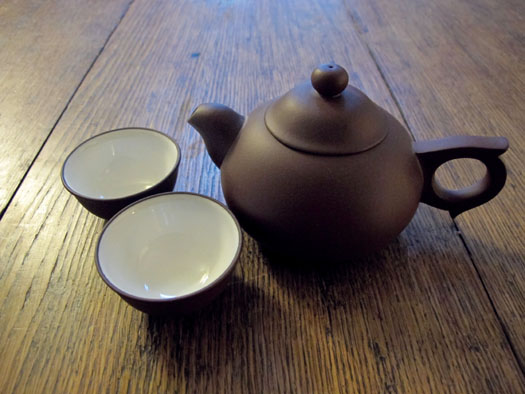
TEA BAGS
I have recommended brewing most of the teas in tea bags, as it is easier to give the correct quantities of tea needed for one person and they are a great way to contain the plant so that you dont get bits in your tea. There are other tea infusers on the market you can use as an alternative or you can simply use the plant loose in a teapot. Tea bags have a bad reputation as they are often filled with poor quality tea and higher quality teas are always sold as loose-leaf. The key to making a wonderful cup of tea in a tea bag is giving the leaves room to move around and properly infuse the water. Using your own tea bags also allows you to reuse the bag to brew subsequent cups. The flavor of a second, third, and even fourth cup of tea is often superior to the first cup, even if the same bag is used over a few days. All the plants have great capacity to keep exuding flavor.
Tea bags were first developed by accident in 1908 by Thomas Sullivan, a New York tea dealer. His wife made small silk bags as a means of sending samples of tea around the world. When the tea arrived, people thought the tea was supposed to be brewed in the bags, and the tea bag was born. Their popularity has grown ever since. Tea bags are filled by machine, and the tea needs to be very finely chopped in order to be able to be packed into these tiny bags. For the mass production of black tea for tea bags, a system of CTCcrush, tear, curlis used. This speeds up the oxidation process and creates tea that is small so it can easily be packed. This is a very harsh process that gives a strong rich taste, but the tea loses all subtlety and depth of flavor.

